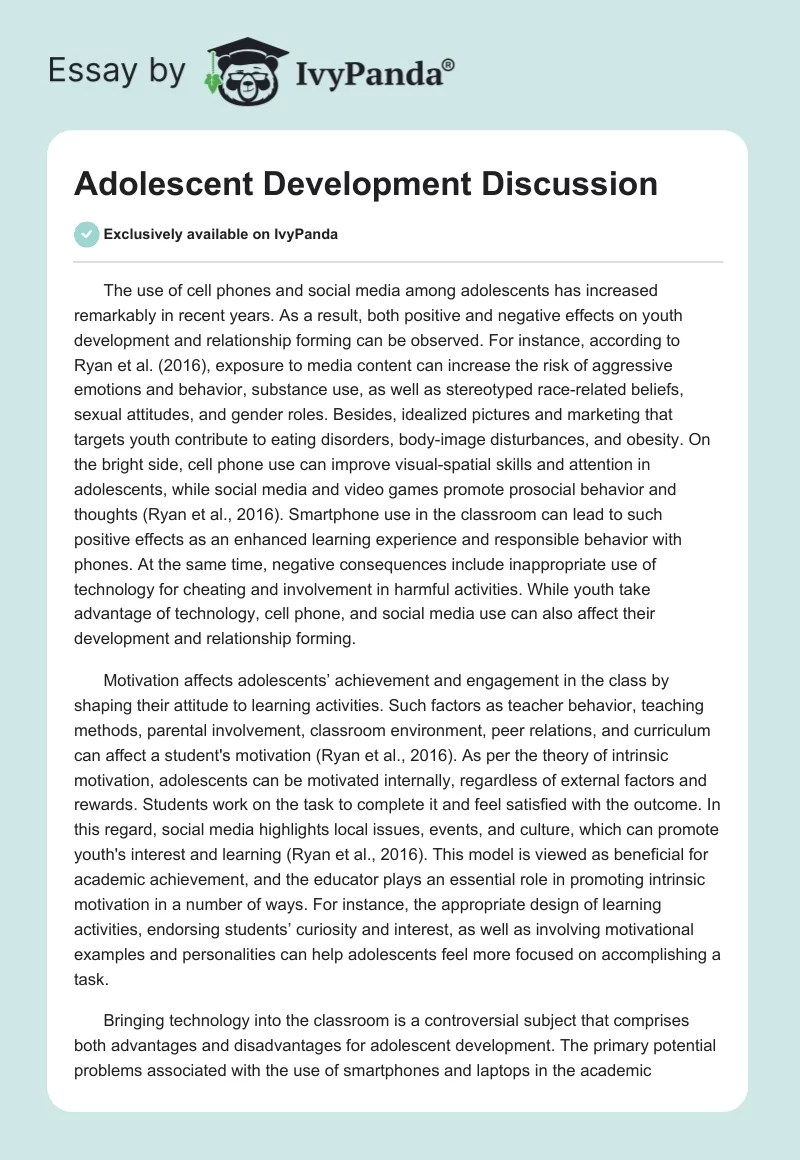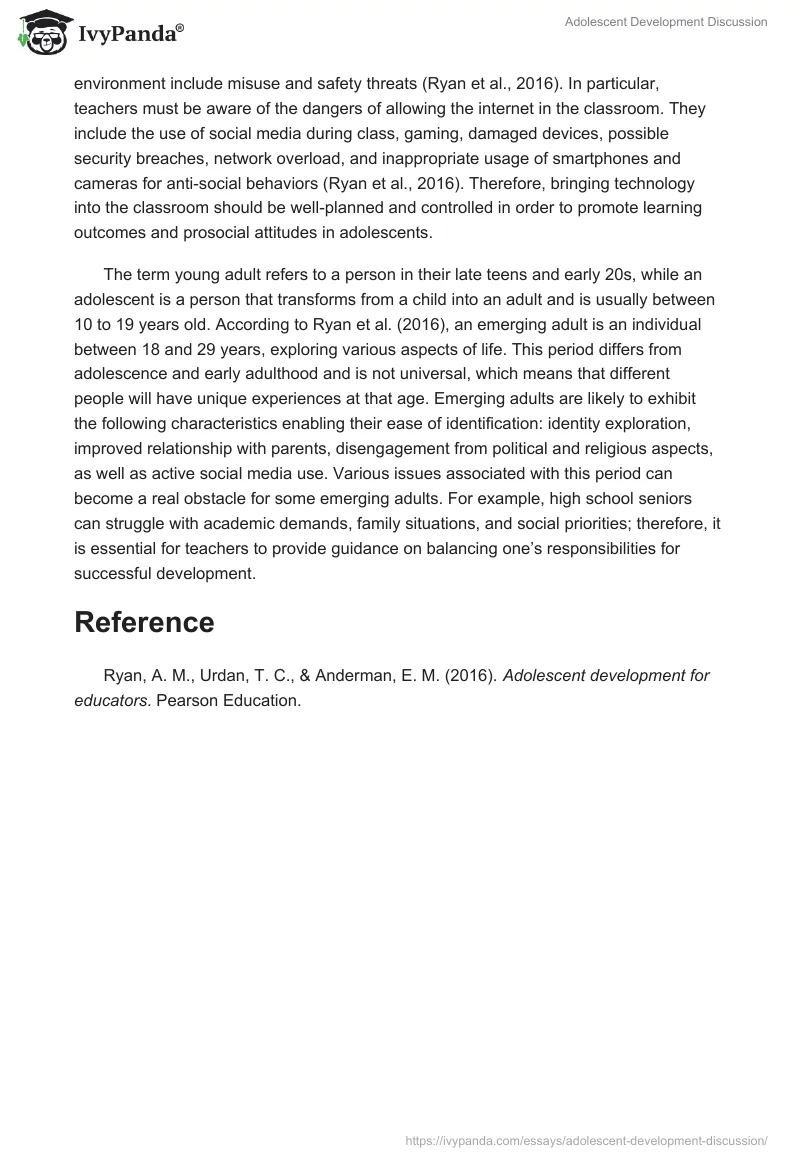The use of cell phones and social media among adolescents has increased remarkably in recent years. As a result, both positive and negative effects on youth development and relationship forming can be observed. For instance, according to Ryan et al. (2016), exposure to media content can increase the risk of aggressive emotions and behavior, substance use, as well as stereotyped race-related beliefs, sexual attitudes, and gender roles. Besides, idealized pictures and marketing that targets youth contribute to eating disorders, body-image disturbances, and obesity. On the bright side, cell phone use can improve visual-spatial skills and attention in adolescents, while social media and video games promote prosocial behavior and thoughts (Ryan et al., 2016). Smartphone use in the classroom can lead to such positive effects as an enhanced learning experience and responsible behavior with phones. At the same time, negative consequences include inappropriate use of technology for cheating and involvement in harmful activities. While youth take advantage of technology, cell phone, and social media use can also affect their development and relationship forming.
Motivation affects adolescents’ achievement and engagement in the class by shaping their attitude to learning activities. Such factors as teacher behavior, teaching methods, parental involvement, classroom environment, peer relations, and curriculum can affect a student’s motivation (Ryan et al., 2016). As per the theory of intrinsic motivation, adolescents can be motivated internally, regardless of external factors and rewards. Students work on the task to complete it and feel satisfied with the outcome. In this regard, social media highlights local issues, events, and culture, which can promote youth’s interest and learning (Ryan et al., 2016). This model is viewed as beneficial for academic achievement, and the educator plays an essential role in promoting intrinsic motivation in a number of ways. For instance, the appropriate design of learning activities, endorsing students’ curiosity and interest, as well as involving motivational examples and personalities can help adolescents feel more focused on accomplishing a task.
Bringing technology into the classroom is a controversial subject that comprises both advantages and disadvantages for adolescent development. The primary potential problems associated with the use of smartphones and laptops in the academic environment include misuse and safety threats (Ryan et al., 2016). In particular, teachers must be aware of the dangers of allowing the internet in the classroom. They include the use of social media during class, gaming, damaged devices, possible security breaches, network overload, and inappropriate usage of smartphones and cameras for anti-social behaviors (Ryan et al., 2016). Therefore, bringing technology into the classroom should be well-planned and controlled in order to promote learning outcomes and prosocial attitudes in adolescents.
The term young adult refers to a person in their late teens and early 20s, while an adolescent is a person that transforms from a child into an adult and is usually between 10 to 19 years old. According to Ryan et al. (2016), an emerging adult is an individual between 18 and 29 years, exploring various aspects of life. This period differs from adolescence and early adulthood and is not universal, which means that different people will have unique experiences at that age. Emerging adults are likely to exhibit the following characteristics enabling their ease of identification: identity exploration, improved relationship with parents, disengagement from political and religious aspects, as well as active social media use. Various issues associated with this period can become a real obstacle for some emerging adults. For example, high school seniors can struggle with academic demands, family situations, and social priorities; therefore, it is essential for teachers to provide guidance on balancing one’s responsibilities for successful development.
Reference
Ryan, A. M., Urdan, T. C., & Anderman, E. M. (2016). Adolescent development for educators. Pearson Education.


